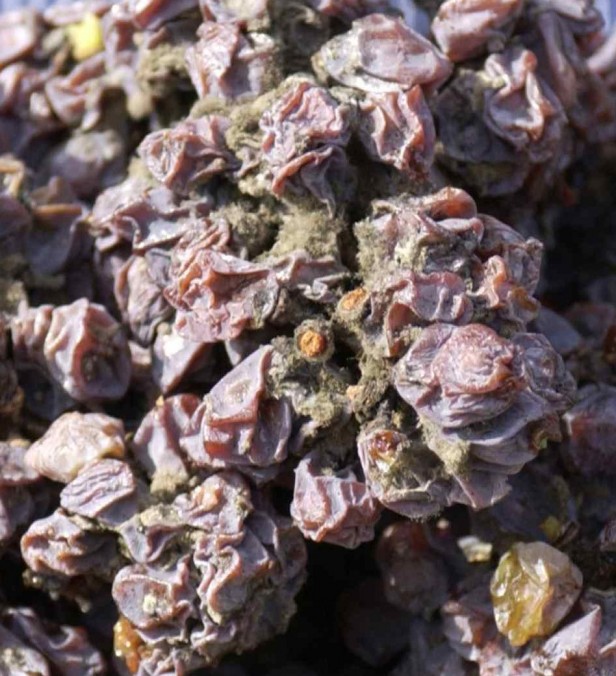
Botrytis cinerea refers to a mould that can cause major damage to the vineyard if it occurs too early in the year. At the right time, however, when he already infects ripe berries, he is very welcome, as he is responsible for the emergence of noble rot (botrytis). This is particularly desirable in Beerenauslese and Trockenbeerenauslese – for the latter even inevitable. Botrytis is an important factor for the vintage quality of certain sweet wines.
A moderately humid climate, preferably with cooler nights alternating with warm days when the sun can dry the grapes offers the best conditions for botrytis. Many river valleys with steep sunlit slopes, such as Moselle or Rhine Valley offer these conditions, but also large bodies of water in warmer climates. When the botrytis has attacked the grapes, the warm golden yellow of the grapes subsides and the colors slowly become reddish, then brownish-violet and finally dark. In addition, the berries are covered by a greyish mold. These color changes are accompanied by the creation of new flavors. The mould makes theskin of the berries very porous and consequently reduces the water content of the berries due to an enhanced evaporation, thereby increasing the concentration of sugar, acid and aromatic substances. Riesling, Gewürztraminer and Sauvignon blanc are grape varieties commonly affected by botrytis.